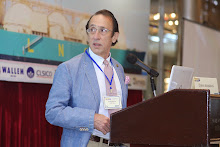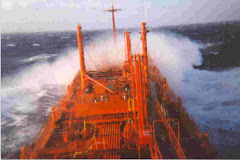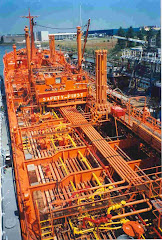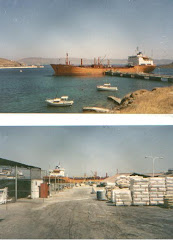When Peter Georgiopoulos jumped on the band wagon back in 2014 and moved into the chemical tanker sector with a speculative order in China and establishing Chemical Transportation Group, it was clear that the MR/ handysize stainless sector was clearly going to be over invested and rates would disappoint from the excess capacity. I have mentioned this in a prior post: Is Peter G’s sudden foray into chemical tankers a clear signal to short the sector? http://amaliatank.blogspot.gr/2014/04/is-peter-gs-sudden-foray-into-chemical.html.
Peter was a chemical tanker outsider with no knowledge of the industry and a career of speculative asset plays. Peter G is essentially an asset trader with mixed reputation on operating profits. He has made some very good asset plays and had also some very bad calls resulting in disastrous hits for his investors that crashed into bankruptcy and reorganization like Genmar and Genco.
Now we see Georgiopoulos monetizing half of his chemical fleet and breaking off from his pool managers, Hansa Tankers, to a new pool with Odfjell, who already has Celsius Tankers backed by Breakwater as clients. This appears a wise move on his part. Doubtful that he is making the profits that he expected but then he walked into a sector of the market where he had no experience.
Chemical tankers have had traditionally poorer returns on asset than any other shipping sector. It is small market that is only 3% of the entire tanker market. Stainless steel chemical tankers are expensive, specialized assets that only a few can operate efficiently because of the parcel nature of the cargo lots and the need for a contract base with end users. The vessels are often built to order for the needs of the major operators. It is generally a very narrow resale market where the best contenders are a handful of peer operators. It is difficult to time the sales because the vessels are committed to contracts and cannot easily be freed up. Because it Is a relatively small market size, it does not take a lot of ordering to flood the market with over capacity.
A great deal of ordering has been motivated by the shipyards. In this particular cases, Ding Heng in China wanted to develop a niche market reputation for handysize stainless-steel chemical tankers. Building a stainless chemical vessel is much more difficult than an LPG carrier. In the case of LPG vessels, the cargo tanks are pre-fabricated by the manufacturer and then mounted into the vessel by the shipyard. LPG vessels only have a very few cargo tanks. In the case of stainless steel vessel, the cargo tanks are many and they have to be built into the vessel. This work is very costly and requires skilled welders that know how to work with stainless steel. It can also result in painful, loss making contracts for novice shipyards with higher construction costs, unexpected delays and performance problem.
The Italians built the last generation of stainless vessels back in the late 1990’s under state yard subsidy schemes. They were replaced in part by a new generation of vessel with Marine Line coating built speculatively in Turkey. None of these vessels built every made much money for their owners from these two periods of ordering binges.
The Japanese have been very successful in building high quality clad stainless vessels with very standardized designs without room for modifications. They are supported by domestic Japanese owners, who then time charter them on a long term basis to the major operators like Stolt, Odfjell and Tokyo Marine. These are very reliable cookie cutter designs of good quality.
The above major chemical tanker operators are a ‘defacto’ industry oligopoly. The entry barriers with the end users for major contracts are substantial. They create base cargoes for which profits come from the completion cargos on the spot market. As in any competitive, relatively low margin business, the major operators are best served with a mixed fleet of chartered and owned vessels, where they can add and subtract tonnage according to market conditions. Speculative owners are very much price takers in this process.
Georgiopoulos tried to soften this by turning to Hansa Tankers in Bergen, Norway for pool employment. Hansa was a break off from the collapse of Bryggen Tankers where one of the partner, Hans Solberg, decided to go on his own. Hans Solberg has built up a very impressive commercial/ pool management business in this sector with an impressive roster of clients, comprised of some major Japanese names, some institutional investors in the sector like Princimar and Greek operators like Interunity and Georgiopoulos who moved into the sector a vessel operators without chemical tanker commercial management skills. Commercial management in the chemical sector is a lucrative business.
Currently, the chemical markets are weak. Last year was not a good year and this year is proving difficult. The Odfjell move makes sense and is no surprise as part of the inevitable chemical tanker industry consolidation process. You have a major chemical tanker operator partially absorbing a novice operator as well as undercutting Hansa commercial management and poaching the existing Georgiopoulos vessels to their own management.








